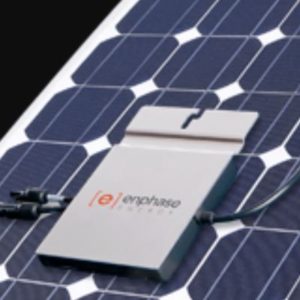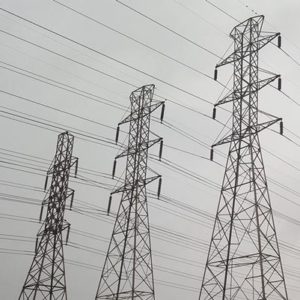This is your SolarWakeup for April 19th, 2018
For the trade lawyers, as you read this. What does SunPower buying SolarWorld and Suniva asset sale mean for a global tariff/duty settlement? Does SunPower get to speak for SolarWorld on this issue now?
Not All Bad Deeds Go Punished. SunPower has entered into an agreement to acquire the shares of SolarWorld Americas, Inc. This took most of the solar industry by surprise, myself included, when the news broke before the market opened yesterday. The market has reacted positively with a 11% bump in stock price based on the notion that SunPower has a way to get around 201 tariffs. A few hours before those news broke, the comments about the 201 exclusions came out in which SolarWorld supported SunPower’s request for exclusion which seemed odd given the market segment, residential, that both companies operate in.
Reading Between The Lines. I don’t actually think this is about 201 tariffs. If SunPower were to acquire SolarWorld for 201, why not wait until the exclusion was rejected? I think that SolarWorld was in a bad place and needed a buyer which means that the price was right. At the same time, SunPower needed to add a product that could both be labeled as Made in the USA and cheaper. SunPower installers love the premium product but all of them carry a second product so they don’t lose deals purely based on price. Now, SunPower could offer a two tiered offering into its dealer network, which is as good as it gets. To summarize, SunPower buying SolarWorld is more of a play for residential market share than 201 tariffs.
Future Of Suniva. In the ongoing bankruptcy proceedings for Suniva, SQN has let the court know that they are selling some (or all) of the companies manufacturing equipment. This means that most of the value of the company aside from any intellectual property is leaving the company, if a buyer comes around. The 201 trade case is ending much quicker than it started, we haven’t even gotten to the point where prices can prop up local manufacturing.
The Business Of Solar. The annual solar means business report is out and Target is the big leader, adding 40MW in 2017 and the first to reach 200MW. Congrats to the Target team, many of whom are readers, for showing great corporate leadership. The other takeaway is Walmart putting the brakes on its program or at least taking a hiatus. Would be interesting to hear what caused the slowdown of deployment.
The Charging Infrastructure. Now VW is getting into the race to deploy more charging infrastructure. I question the OEM specific nature of this and why the utilities aren’t out front leading the development. When I go to my local Whole Foods, there is a charging station there that is free for me to use, a benefit for Whole Foods since I stay in the store longer than I otherwise would.
News
Opinions:
Have a great day!
Yann
Suniva Being Sold For Parts (Literally), Just Like We Said

By Frank Andorka, Senior Correspondent What Happened:And now in this corner, from the other end of the Section 201 tariff case, comes the news that Suniva is literally being sold for parts by its creditor SQN Capital Management.: Who could have seen this coming? (Everyone. Everyone saw this coming.) SQN Capital Management is the same outfit that famously offered to sell Suniva off to the Chinese Chamber of Commerce for a cool $55 million left on a Central Park bench at 3 a.m. Now they’ve gotten the OK to sell off the manufacturing equipment at a public auction, does anyone … Read More
We’re Happy For SolarWorld Employees – But That’s It

By Frank Andorka, Senior Correspondent What Happened:And so it ends. What was once the emblematic brand of the U.S. solar industry – SolarWorld – is gone, as Sunpower has announced it will snap up at least the company’s assets.: As much as SolarWorld the corporation deserves scorn for its destructive behavior over the past 12 months, there really isn’t any such thing as SolarWorld as a corporation. In reality, the company is made up of people – real, flesh-and-blood people – and if Sunpower’s purchase of the company saves their jobs, then we can’t be anything but happy here at … Read More
This is your SolarWakeup for April 18th, 2018
The (Not So) Dark Side Of Solar. If you follow energy conversations on Twitter, there is a set of a half dozen energy Phd’s that educate (troll) solar conversations quite a bit. Yesterday, when I saw the article from Varun Sivaram, I rolled my eyes but then you made it the most clicked link. The oped is non-sense, Frank does the breakdown, and I’d be happy to defend my calling it non-sense. The danger is the real estate Varun is getting his message into, namely Brookings blog and Washington Post. Solar folks will read the article and know that it wasn’t factions of the solar industry fighting for tariffs, just two bankrupt companies. Solar may be able to get itself into political conversations but definitely doesn’t have political clout. Look at South Carolina, what did Varun want solar to argue for in addition to the NEM cap increase that solar didn’t get? Varun is anti distributed generation and against the ITC, in short, his message is to co-opt the public opinion support solar enjoys for more of the same 20th century message.
Storage At The State Level. State level energy storage targets are close to topping 10GW in the first real year that these legislative and executive order targets are proposed. So what’s next with these targets? Should I raise my hand and say that I have projects ready for construction with project finance capital and need a revenue stream? Aside from the SMART program in MA, we are still in a likely regulator process that will require pricing signals to happen. The money is still lacking on the energy storage side, a problem I am working to solve for you, but project pipelines are also nonexistent with any real scale. More announcements on the storage investment capital coming soon.
Sunny Insurance. Farmers spend as much of their time and resources hedging and forward selling their output as they do actually farming. As the weather becomes the unknown, the agricultural market has created insurance products to minimize the risk of weather. Solar is now being served by similar products, like kWh Analytics’ revenue put, that limits the risk to debt and ideally lowers the cost of capital. Look for credit default products to be created as well, another way that C&I could be fixed.
Private Equity Buys Into Solar. Conti Solar, part of Conti Group, is selling a majority stake of the business to ARES EIF, the private equity group’s energy infrastructure fund. Management will stay in place and financial terms were not released by the companies. Conti Solar installed 175MW in 2017 and if I were to guess, this is as much as a focus on growing the EPC business as it is creating a pipeline for projects to invest in. This is what the board room would call a ‘platform play’.
Completing The Turnaround. Enphase is getting positive reviews from Wall Street analysts. The company has struggled a bit in past years but now sees light at the end of the tunnel. 2017 was a tough year for residential and large customers limited their growth so the distribution channel had to come back to life, and it has. The democratization of capital available to local installers is also helping residential solar bounce back in a big way. So as costs decline, Enphase is at the center of the installation that adds value to the homeowner, maybe even with some nifty consumer focused data, creating real value to the market. Turnarounds are hard and turnarounds in solar are more so, hats off to the Enphase team to execute.
News
Opinions:
Have a great day!
Yann
Solar Straw Men Sure Are Easy To Beat

By Frank Andorka, Senior Correspondent What Happened:Varun Sivaram, the Philip D. Reed Fellow for Science and Technology for the Council on Foreign Relations, builds several admirable straw men to flog, including these nuggets of what apparently passes for wisdom at The Brookings Institute and The Washington Post: Solar advocates are bad because they don’t advocate for nuclear energy and carbon capture (nope, I got nothing). Solar advocates only want deployment, not research into new technologies (perovskite researchers, you might want to give Varun a call). Solar advocates have argued for tariffs, raising costs and stifling inovation (to paraphrase comedian Lewis … Read More
Welcome Back, Enphase, To The Realm Of The Possibly Profitable

By Frank Andorka, Senior Correspondent What Happened:Reviews of Enphase’s Q1 2018 continue to be unusually positive, signaling that maybe its financial struggles may be receding in the rearview mirror. Roth Capital continued to cheerlead from the sidelines after switching the company’s stock to a “buy” in February. And the North Bay Business Journal breathlessly reported that Enphase may finally be on the brink of profitability. SolarWakeup’s View: For me, this is a nice-time story. [wds id=”3″] Enphase was one of the first companies with whom I met when I first joined the solar industry in 2011. Their microinverter was creating … Read More
This is your SolarWakeup for April 17th, 2018
Solar Is Big Money. In 2018, the global solar market is going to top 100GW. That means more than $100 billion in total capital was committed to the market for 20 years of solar cashflows. In the US we likely stayed north of $20billion last year which is impressive on its own but we are getting to the point that global investors see the safety of the solar investment. There is still plenty of risk allocated to the market and room to lower the cost of capital. The margins remain on the pipeline side of the ledger, if someone can put land, interconnection and revenue together, they have created the value that will get them paid.
The Big Lyft. Lyft is targeting 1billion self driving electric vehicle rides by 2025, annually. Maybe that explains why Google’s energy director, Sam Arons, recently joined Lyft as the Director of Sustainability. Sam was often on the solar circuit talking about Google’s energy strategy and how the company would get to 100% renewable energy. I can only surmise that Lyft is thinking that the billion electric rides need to be powered with renewable energy. A corporate deal for a fleet of EVs?
Time For Retail Choice. Rocky Mountain Institute is out with a consumerism report using Green Mountain Power as the case study. The broader story here is the intermediate step before monopoly markets are deregulated and that is retail choice. This would be the allowance of third parties to serve as retail providers to consumers that wanted to enter into short term contracts for energy for the product and price they are willing to pay. Like picking a cable provider but for energy. Some legislation has been floating for this and gets pushed back quite a bit but it would be a great step forward if there is more traction on this issue.
Tuesday’s Mailbag. Thank you to the tremendous feedback about my comments from yesterday, which Frank covered in more detail. This reminds me of the arguments I was having with SEIA back in 2014 when SEIA wasn’t sure that it would support an ITC extension (yes, that happened) because some members weren’t supportive. It took the Solar Pledge and some marketing to get SEIA on board with the ITC extension and in this case it will take your voices to stop utilities from being members at SEIA, even as non-voting members. As I’ve urged those that have emailed me, make sure you let SEIA know how you feel.
Forest Through The Trees. This appears to be a bit of a scrivener’s error or at worst a silly way to stop distributed generation in California. EDF does a good job in shining the light on this.
News
Opinions:
Have a great day!
Yann
Cigarette Companies To Exxon Execs: Damn, Sucks To Be You!

By Frank Andorka, Senior Correspondent What Happened: Massachusetts’ Supreme Judicial Court told Exxon it couldn’t hide evidence it knew about global climate change (and its role in producing it) for years before they admitted it. The ruling crushed Exxon’s hopes of keeping the information from the state’s attorney general, Maura Healey, who is currently investigating the company’s alleged history of climate perfidy. As Think Progress notes, “In January 2017, a Massachusetts Superior Court judge ruled Exxon must comply with Healey’s investigation and turn over 40 years of documents on climate change. Exxon appealed. SolarWakeup’s View: When you’re getting sympathy cards … Read More
Here’s What Happens When Utilities Rule The Roost

By Frank Andorka, Senior Correspondent What Happened: This is going to shock a lot of you, but utilities would like the solar industry to stop harping on net metering and move to what they call “rate design.” K Kaufmann, communications manager for the Smart Electric Power Association (the utilities’ arm of the solar discussion) (SEPA), lays out the case for why moving the conversation away from net metering will help utilities. Oddly, however, it doesn’t explain why there would be any advantage to the solar industry to move off net metering. SolarWakeup’s View: Sometimes, the jokes write themselves. [wds id=”3″] … Read More
This is your SolarWakeup for April 16th, 2018
SPI Host Says, Forget Net Metering. Rate design is a false flag meant to lure solar advocates into a discussion of how we move into a large solar integration conversation. By changing the conversation from simple net metering to a complicated discussion about fixed charges, SEPA is saying to you, forget net metering. Last year ~3GW was distributed versus almost 10GW in utility scale. Gutting net metering is a fight to take energy choice away from the largest source of energy demand, the buildings across America so that more rate base can be invested. The larger point is that almost $4million from the trade shows we all attend goes to fund this rhetoric and I’m a bit tired of the status quo. Fighting for net metering means that all solar has a chance and grows across all of the value chains and we can’t have half of our trade show money going to values that don’t align with 90%+ of the solar industry because what does it say about our values if we don’t spend it on likeminded ventures.
A Runaway American Dream. The era of Chris Christie is over, Governor Phil Murphy is in the house now! NJ is going big with an enhanced RPS, SREC fixes and a community solar program. All of that on top of the PJM market will likely create some new development opportunities in Jersey. I look forward to seeing how this plays out over the next few years.
Exhibit A. For the past week, you (the readers) have been clicking on the South Carolina story of the day which caused Frank to have to cover the daily play by play. That’s the interesting part of the second story, we don’t control the topic, you do! But look at what happened in South Carolina where solar advocates, including Sunrun which has been reaching across the proverbial aisle as much as anyone, asked for a cap increase while utilities were busy losing billions on unbuilt power plants. After losing the vote, utilities pushed for a crazy rule that required the NEM cap increase to be approved by 2/3 of the House. What picture am I missing?
Exhibit B. Germany had a renewable energy auction and solar won all of the contracts with an average rate of 4.67 euro cents per kWh. In dollars that’s about 6 cents per kWh and Germany doesn’t have an ITC and has higher income taxes. Germany also has a similar irradiance level as Washington State or Southern Alaska. That’s the problem with ratebased solar power, the private sector can do the exact same thing but better and cheaper without a double digit return. If I were a regulator, I would require any rate based renewable energy or energy storage to have to compete with an open RFP. Get the picture?
Exhibit C. Here’s the bigger picture. (TL;DR) The monopoly system doesn’t work anymore. The market is moving on to consumer and retail choice. Produce your own, procure responsibly; cheaply or do nothing and go with the wires provider. Nuclear is a good example, the utility sector is pushing to build new and consumers through legislators supported this. Then it required money so they approved advanced cost recovery. Then the delays happened, bankrupt suppliers and whistleblowers. Now solar with storage is less than 5 cents per kWh in sunny areas. Time to move on and let the market handle the 21st century. Picture that.
News
Opinions:
Have a great day!
Yann

